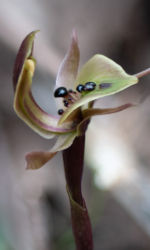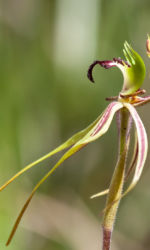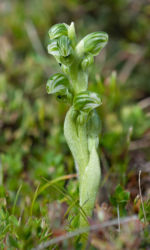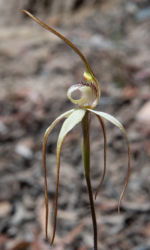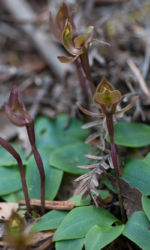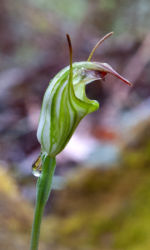December 2021
Like November and October this year, there has been far more wet weather than usual and this has affected orchid flowering. The genus obviously adversely affected is Theymitra, the Sun orchids. While there have been some good days for finding these warmth-loving flowers open, opportunities were still restricted by wet, cool weather. By now, mid-December much of the flowering has finished for these and other late Spring species such as the Bearded Orchids, many Caladenias.
The Bird orchids, Chiloglotis, are still very common in more shaded and damper locations such as the Southern slopes of hills, damp gullies and tucked away under vegetation. The Tall bird, Chiloglitis gunii, and triceratops and gramatta are all quite common in suitable sites on the slopes of Mt Wellington and elsewhere.
The early Summer Caladenias such as the Green comb spider, dilatata and the Summer spider, C helvina are flowering. Dilatata has been seen for some weeks now.
At this time of the year, the higher slopes of Mt Wellington come into their own with the Beech orchids, Towsonia viridis flowering at around 500 – 600 m in the wettest Myrtle Gullies. A number of Greenhoods will also be seen on higher slopes such as P decurva (Summer Greenhood) and the uncommon P atrans – dark-tipped greenhood. The latter has been sighted on lower slopes in shaded locations and should flower in the next week or two.
Further afield, I found the Liawenee Greenhood, Pterostylis pratensis on grassy subalpine plains near the Great Lake in early December. This tiny orchid is easy to miss, being similar in colour and profile to much of the surrounding vegetation.
To see a wide variety of posts about Tasmanian Native Orchids, check out the Facebook Group
